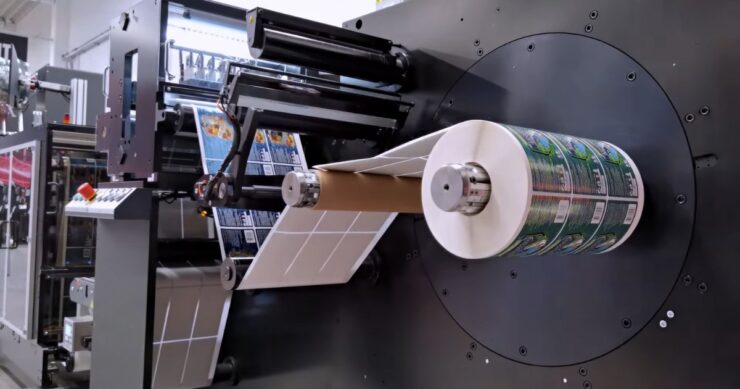
Mastering the art of efficiency is a necessity in today’s fast-paced business environment. Especially when it comes to accounting, a domain where precision meets deadlines, streamlining your workflow can be the game changer that catapults your productivity to new heights.
Let’s face it, handling the numbers isn’t always the most thrilling part of your day, but it’s undeniably crucial. That’s why finding ways to make your accounting processes smoother, quicker, and more efficient isn’t just good practice; it’s essential for the health and growth of your business.
In this article, we’re going to discuss how you can overhaul your accounting workflow. We’re not just talking about shaving off a few minutes here and there. No, we’re aiming for a complete transformation that turns hours of work into minutes, reduces errors to nearly zero, and leaves you wondering what to do with all that extra time.
We understand that every minute you spend bogged down in spreadsheets and figures is a minute not spent driving your business forward. That’s why we’re here to offer you tried-and-tested methods to streamline your accounting processes.
Whether you’re a seasoned financial wizard or just starting to get your feet wet in the world of business finance, this guide is tailored to help you through the complexities of accounting workflows.
Understanding Your Current Accounting Workflow

Before you can dream of a streamlined, efficient accounting workflow, you need to know what you’re working with. It’s like trying to fix a car without knowing what’s under the hood. You wouldn’t do that, right? The same goes for your accounting processes.
Taking a Closer Look at Your Accounts Payable Workflow
Let’s start with your accounts payable workflow. This area is often riddled with inefficiencies that can silently eat away at your productivity. Are invoices piling up? Is your approval process more tangled than a bowl of spaghetti?
These are the kinds of things you need to look out for. Remember, every bottleneck in your accounts payable process is a speed bump on your road to business success.
Identifying Inefficiencies in Accounting and Bookkeeping Services
Now, turn your attention to the broader picture of your accounting & bookkeeping services. Are you still relying on manual data entry? Is your financial reporting more reactive than proactive? These are red flags signaling that your workflow could use a tune-up.
Asking the Hard Questions
To get to the root of inefficiencies, ask yourself these questions:
- How much time do your employees spend on repetitive accounting tasks?
- Are there frequent errors in your financial reports?
- Do you often find yourself playing catch-up at the end of the month or fiscal year?
One practical step you can take is to conduct a time audit. Track how long different accounting tasks are taking. You might be surprised to find out just how much time certain processes are eating up.
Automation in Accounting Workflow

Think about the last time you spent hours on those repetitive accounting tasks. Tedious, right? Now, imagine if you could hand over these time-consuming tasks to a trusty sidekick who never gets tired, never makes mistakes, and works around the clock.
That’s what automation in accounting workflow is all about. It’s like having an ultra-efficient, error-proof assistant dedicated to streamlining your financial processes.
How Automation Transforms Your Daily Accounting Grind
Let’s break it down.
Automation in accounting means using software to handle the routine tasks that you, or your team, would typically do manually. We’re talking about invoicing, data entry, reconciliations, and even some aspects of financial reporting.
By automating these tasks, you’re not just saving time; you’re also drastically reducing the chances of human error – those pesky little mistakes that can snowball into big financial headaches.
The Role of Accounting Workflow Management Software
Here’s where accounting workflow management software steps in. These tools are designed to take the grunt work off your hands, giving you more time to focus on what matters – growing your business. They work by setting up workflows that automatically process tasks according to your predefined rules.
For instance, imagine sending out invoices automatically after a service is delivered, or reconciling transactions daily without lifting a finger.
Leading Software That Can Be Your Accounting Ally
What are some of the top tools in the market? Well, you’ve got a variety of choices depending on your business needs:
- QuickBooks: It’s like the Swiss Army knife of accounting software – versatile and reliable. QuickBooks offers a range of features from invoicing to payroll, suited for small to medium-sized businesses.
- Xero: This is a favorite for those who love user-friendly interfaces. Xero makes accounting seem less daunting with its easy navigation and robust features.
- FreshBooks: Ideal for freelancers and small businesses, FreshBooks simplifies invoicing and expense tracking, and it’s great for those always on the go.
- Sage: If you’re looking for something more comprehensive, Sage offers a suite of accounting and bookkeeping services that cater to more complex business needs.
Embracing the Change for Better Productivity
Adopting these tools might seem like a big leap, especially if you’re used to doing things the old-fashioned way. But trust me, once you experience the efficiency and accuracy that comes with automation, there’s no going back. You’ll find yourself with more time to strategize, analyze, and grow your business.
Integrating Seamless Communication Channels

Have you ever felt like your accounting team is stuck playing a never-ending game of telephone, where messages get lost or distorted along the way? This isn’t only frustrating; it’s a major roadblock to productivity. In the world of accounting, where every detail counts, communication bottlenecks can cause serious inefficiencies.
These hiccups slow down processes, lead to errors, and can even impact your bottom line.
The Power of Effective Communication Tools
The solution lies in harnessing the right tools to streamline your communication. Think of it as upgrading from a walkie-talkie to a smartphone. You want tools that not only send messages but also organize, track, and archive them efficiently.
This is where modern accounting workflow software steps in. These tools are designed to keep everyone on the same page, ensuring that important information doesn’t slip through the cracks.
One game-changing feature of many accounting workflow software is the ability to integrate with your accounts receivable workflow. This integration allows for real-time updates and notifications.
For instance, if there’s a discrepancy in an invoice, your team can immediately flag it, and the relevant person gets notified to take action. This kind of instant, clear communication reduces the time spent backtracking and resolving issues.
Practices to Enhance Internal Communication
But it’s not just about having the right tools; it’s also about using them effectively. Here are some best practices:
- Regular Check-Ins: Schedule regular meetings (but not too many!) to ensure everyone is aligned. These can be brief daily stand-ups or weekly round-ups, depending on your team’s needs.
- Clear Communication Protocols: Establish clear protocols for different types of communication. For example, use instant messaging for quick questions and emails for detailed discussions. This helps in organizing conversations and makes it easier to refer back when needed.
- Training and Familiarization: Ensure everyone is trained and comfortable with the tools in use. There’s no point in having a Ferrari if no one knows how to drive it, right?
- Feedback Loops: Create a culture where feedback is encouraged. Sometimes, the best ideas to improve efficiency come from those who are in the trenches every day.
Related Posts:
- Web Hosting Solutions For Every Budget: Finding The…
- Evaluating Your Life Insurance Needs: Planning for…
- Navigating the NFT Space: Strategies for Successful…
- Customizing Your Aluminum Enclosed Car Trailer:…
- User Intent and Semantic SEO: Aligning Content With…
- Mastering the Art of E-commerce: Proven Strategies…














